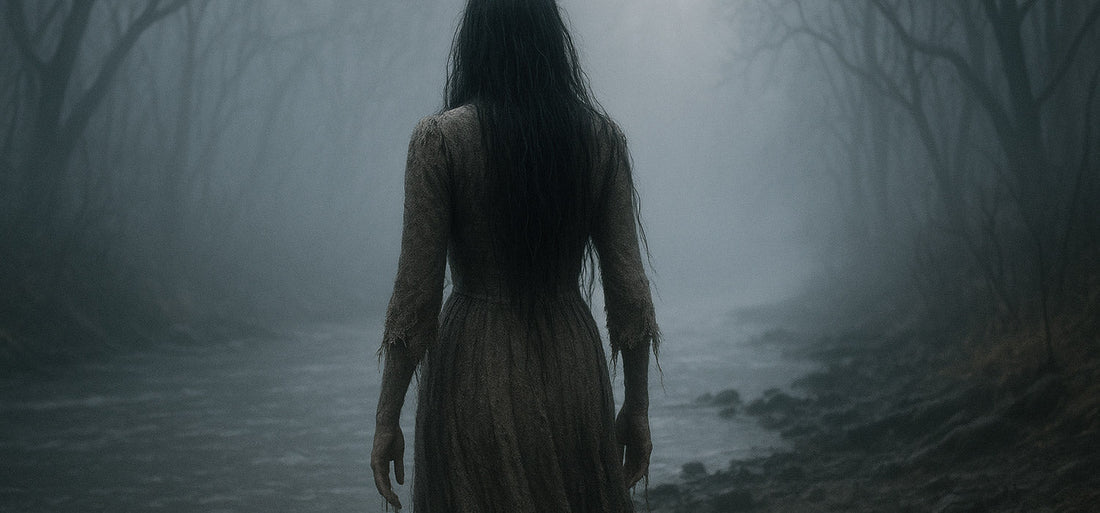
La Llorona Is She Real? Sightings, Stories, and the Unseen
Share
If you’ve ever walked by water late at night and heard a woman weeping, you’re not alone. Thousands have reported hearing the cries of a ghostly woman—one whose legend spans centuries. Her name is La Llorona, and her question is as haunting as her story: Is she real?
Some say she’s a myth, a tool to scare children into obedience. Others claim she’s been seen—by rivers, on bridges, even on dark highways. She’s been caught on video, whispered about in schoolyards, and featured in ghost-hunting forums across Latin America and the U.S.
This blog explores real-life sightings, paranormal theories, cultural psychology, and the deeper question: Why do so many believe they’ve encountered La Llorona?
The Origins of Belief
La Llorona’s legend is rooted in Mexican folklore, where she is said to be the ghost of a woman who drowned her children and now wanders the earth in grief. The story is centuries old, passed down through oral tradition. And like many myths, it adapts—it lives where belief allows it to.
- In some regions, she appears near rivers.
- In others, she’s seen on foggy mountain roads.
- Her voice is described as piercing, otherworldly—“¡Ay, mis hijos!”
Reported Sightings: Stories That Refuse to Die
While no verified proof exists, countless people across generations claim to have seen or heard La Llorona. Some of the most widely shared reports include:
The Santa Fe Encounter (1980s)
A New Mexico family heard weeping outside their home late one night. When they looked, a woman in white was walking along the ditch near their property. As they approached, she vanished into thin air.
Houston Highway Video (2004)
A grainy dashcam clip shows what appears to be a woman in a soaked dress walking along the side of the road. The video, posted to early internet forums, reignited the debate—and the fear.
Schoolyard Shadows (Ongoing)
Multiple children in Latino neighborhoods across California and Texas have reported hearing a woman crying near schoolyard fences. No adult ever finds anything. But the stories keep coming.
Are they misidentifications? Urban hysteria? Or something more?
Cultural Psychology: Why La Llorona Feels Real
Psychologists studying urban legends point to La Llorona as a case of “cultural haunting.” Here’s why she persists:
- She’s familiar: Passed down in stories, she becomes a part of childhood.
- She has clear boundaries: Seen near water, at night, crying for children.
- She’s emotionally powerful: Her story is tied to guilt, grief, and motherhood.
- She’s easy to “see”: Our minds are wired to interpret shapes, sounds, and fear.
These conditions make La Llorona a perfect candidate for group hallucination—but also a perfect vessel for genuine paranormal activity, if you believe in it.
Ghost? Demon? Energy?
Paranormal investigators disagree on what La Llorona is—if she’s real at all. The leading theories include:
- Earthbound spirit: A soul unable to pass on due to unresolved trauma.
- Residual haunting: Her actions repeat like a recording tied to a location.
- Demonic entity: Some claim “La Llorona” is actually a shape-shifter or dark spirit mimicking the legend.
- Collective manifestation: Our belief feeds her presence—making her real through mass fear.
None of these theories can be proven. But every year, new accounts surface.
What to Do If You Hear Her
Believers often share warnings:
- Don’t follow the crying.
- Don’t speak to her.
- Don’t let her know you’ve seen her.
If you hear a woman crying near water, walk away. Say a prayer. And don’t look back.
Some even carry protective charms, crosses, or sage. Others avoid rivers at night entirely.
It’s not about whether she’s real—it’s about what you believe when you hear the sound.
A Haunting That Moves with You
La Llorona doesn’t stay put. That’s part of what makes her terrifying.
- She’s been spotted in Mexico, the U.S., Central America, and even in haunted house attractions.
- Some claim she shows up after major personal loss.
- Others say she attaches to places where children have died.
Her legend moves with migration, trauma, and memory.
Her Presence in Fashion and Culture
At Urban Myth Apparel, we interpret La Llorona not just as a ghost—but as a symbol of cultural memory and generational grief.
- Cracked text that resembles weathered warnings
- Flowing silhouettes inspired by her white dress
- Wailing motifs and Spanish phrases embedded in graphics
- Muted tones pulled from rivers, fog, and night
We don’t just sell apparel. We craft modern folklore.
Final Thoughts: The Question Remains
Is La Llorona real?
It depends on what you think you saw.
It depends on how your skin feels when the air changes.
It depends on whether you’ve ever heard something that didn’t make sense—and didn’t want to find out more.
Maybe she’s a story. Maybe she’s a ghost. Maybe she’s something we carry with us.
Just don’t follow the sound.
